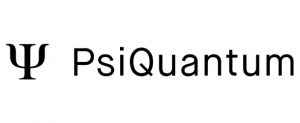
Quantum News Briefs October 10:
IIT Delhi researchers achieve secure quantum communication for 380 km in standard telecom fiber
 Scientists at Indian Institute of Technology (IIT) Delhi have achieved a trusted-node-free quantum key distribution (QKD) up to 380 km in standard telecom fiber with a very low quantum bit error rate (QBER). Quantum News Briefs summarizes the Education Times article.
Scientists at Indian Institute of Technology (IIT) Delhi have achieved a trusted-node-free quantum key distribution (QKD) up to 380 km in standard telecom fiber with a very low quantum bit error rate (QBER). Quantum News Briefs summarizes the Education Times article.
According to the institution, this long secure length is the highest achieved so far, not only in India but first globally for the Differential Phase Shift (DPS) QKD protocol, keeping IIT Delhi at the forefront of research and development in quantum communication technologies. Such low QBER enables the DPS QKD scheme resistant to collective and individual attacks and implementable for various applications, such as securing financial transactions, medical records, and secret codes. It is also capable of securing network communication, such as the Internet of Things (IoT), and is ready to revolutionize the field of cyber security.
Bhaskar Kanseri, lead researcher and associate professor at the Physics Department and Optics and Photonics Centre, said, “This realisation using state-of-the-art technology would not only help in reducing the need for trusted nodes for intercity or long-distance quantum key exchange, increasing the security of the cryptography scheme, but would also prove to be a crucial step towards the commercial production of long-distance secure practical QKD devices.”
According to Kanseri, the current DPS QKD demonstration for the first time optimizes most of the sources of errors, which are mainly due to the laser linewidth, modulation bandwidth, detector noise, and dispersion of fibers, resulting in the least QBER (less than 2.5%) achieved so far, which is an international record for such a large distance in fiber. Click here to read the complete article in India’s Indian Times.
UCLA researchers set to develop quantum sensors with recent grant funding
 UCLA researchers received a $1 million grant to develop a new method for identifying air particulates, which may be useful in combating climate change. Quantum News Briefs summarizes.
UCLA researchers received a $1 million grant to develop a new method for identifying air particulates, which may be useful in combating climate change. Quantum News Briefs summarizes.
The grant, which the researchers received from the National Science Foundation in August, is part of a larger series of funding to promote quantum technology and research, according to the NSF. Prineha Narang, the project’s lead investigator, said they will use the grant to develop a network of quantum sensors – technology that is sensitive to changes in the environment – to detect particulates in the air, giving insight into air quality.
Narang, who is also a professor of physical sciences, added that the technique – which is known as distributed quantum sensing and is more sensitive than a single sensor – has never before been used for environmental reasons, such as agriculture and climate change.
This technique creates “fingerprints” for specific molecules so that a specific sensor can detect and determine the compounds in the environment at a specific time and place, said Sergio Carbajo, an assistant professor of electrical and computer engineering. This model makes more sense than treating the air quality detected by sensors in isolation, since climate systems in these locations are correlated, added Carbajo, who also holds a post in the physics and astronomy department.
Narang, whose research generally focuses on the quantum level, said she became interested in the subject during an impromptu meeting with Suzanne Paulson, the then-chair of the Department of Atmospheric and Oceanic Sciences, where the two discussed the potential intersection between their fields of study. Click here to read the complete Daily Bruin article.
PsiQuantum and Hartree Centre announce partnership to develop fault-tolerant quantum computing applications
 At the official opening of PsiDaresbury, the new STFC-PsiQuantum R&D facility, PsiQuantum announced that it is beginning work with STFC’s Hartree Centre, with the support of the National Security Strategic Investment Fund (NSSIF), on a 12-month project to develop Fault-Tolerant Quantum Computing (FTQC) applications in the UK. Insights from this work will be shared across government and with collaborative industry partners.
At the official opening of PsiDaresbury, the new STFC-PsiQuantum R&D facility, PsiQuantum announced that it is beginning work with STFC’s Hartree Centre, with the support of the National Security Strategic Investment Fund (NSSIF), on a 12-month project to develop Fault-Tolerant Quantum Computing (FTQC) applications in the UK. Insights from this work will be shared across government and with collaborative industry partners.
The event was hosted by PsiQuantum co-founders Terry Rudolph, Chief Architect, and Mark Thompson, Chief Technologist, and included remarks from the Rt. Hon. Michelle Donelan, MP, Secretary of State for Science, Innovation and Technology; Steve Rotheram, Mayor of the Liverpool City Region; Mark Thomson, Executive Chair of the STFC; Paul Vernon, Executive Director, STFC; Professor Sir Peter Knight, Quantum Optics and Senior Research Investigator, Imperial College London; Professor Elham Kashefi, Chief Scientist, NQCC; Michael Cuthbert, Director, NQCC; and Kate Royse, Director, Hartree Centre.
PsiQuantum’s advanced R&D facility at STFC’s Daresbury Laboratory is backed by £9M of funding from the UK government’s Department for Science, Innovation and Technology (DSIT), and gives the company access to one of Europe’s largest liquid-helium (approx. -270°C) cryogenic plants. Working with Daresbury Laboratory experts specialized in large-scale cryogenic infrastructure, PsiQuantum is developing next generation cryogenic quantum modules with the highest cryogenic cooling power deployed to date, representing a major step towards large-scale quantum computers capable of solving commercially relevant problems. PsiQuantum’s first cryogenic quantum modules are already up and running, with a capacity of over 10x previous systems.
The Hartree Centre is a high-performance computing, data analytics and artificial intelligence (AI) government research facility and is part of the of the Sci-Tech Daresbury science and innovation campus. The collaboration has three aims:
- Build a strong FTQC knowledge base at the Hartree Centre
- Identify the most valuable and high impact problem statements for government and industry
- Develop algorithms that will underpin two high-priority applications.
The program of work includes FTQC training to build necessary skills at the Hartree Centre; thematic workshops addressing a suite of problem statements relevant to critical computational challenges for dual-use technology applications; and two industrially-relevant use cases. Click here to read the announcement in-entirety.

Kater Murch, the Charles M. Hohenberg Professor of Physics, and Ph.D. students Guanghui He, Ruotian (Reginald) Gong and Zhongyuan Liu in Arts & Sciences at Washington University in St. Louis have taken a major step forward in a quest to turn diamonds into a quantum simulator. Quantum News Briefs summarizes the October 2 article in Phys.org.
Co-authors of the recent paper include Kater Murch, the Charles M. Hohenberg Professor of Physics, and Ph.D. students Guanghui He, Ruotian (Reginald) Gong and Zhongyuan Liu. Their work is supported in part by the Center for Quantum Leaps, a signature initiative of the Arts & Sciences strategic plan that aims to apply quantum insights and technologies to physics, biomedical and life sciences, drug discovery and other far-reaching fields.
The researchers transformed diamonds by bombarding them with nitrogen atoms. Some of those nitrogen atoms dislodge carbon atoms, creating flaws in an otherwise perfect crystal. The resulting gaps are filled with electrons that have their own spin and magnetism, quantum properties that can be measured and manipulated for a wide range of applications.
As Zu and his team previously revealed through a study of boron, such flaws could potentially be used as quantum sensors that respond to their environment and to each other. In the new study, the researchers focused on another possibility: using imperfect crystals to study the incredibly complicated quantum world.”We carefully engineer our quantum system to create a simulation program and let it run,” Zu said. “In the end, we observe the results. It’s something that would be almost impossible to solve using a classical computer.”
The team’s progress in this area will enable the investigation of some of the most exciting facets of many-body quantum physics, including the realization of novel phases of matter and the prediction of emergent phenomena from complex quantum systems.
In the latest study, Zu and his team were able to keep their system stable for up to up to 10 milliseconds, a long stretch of time in the quantum world. Remarkably, unlike other quantum simulation systems that operate at ultra-cold temperatures, their diamond-built system runs at room temperature.
The new diamond-based system allows physicists to study interactions of multiple quantum regions at once. It also opens up the possibility for increasingly sensitive quantum sensors. “The longer a quantum system lives, the greater the sensitivity,” Zu said. Click here to read the October 2 Phys.org article in-entirety
Sandra K. Helsel, Ph.D. has been researching and reporting on frontier technologies since 1990. She has her Ph.D. from the University of Arizona.
- SEO Powered Content & PR Distribution. Get Amplified Today.
- PlatoData.Network Vertical Generative Ai. Empower Yourself. Access Here.
- PlatoAiStream. Web3 Intelligence. Knowledge Amplified. Access Here.
- PlatoESG. Carbon, CleanTech, Energy, Environment, Solar, Waste Management. Access Here.
- PlatoHealth. Biotech and Clinical Trials Intelligence. Access Here.
- Source: https://www.insidequantumtechnology.com/news-archive/quantum-news-briefs-october-10-iit-delhi-researchers-achieve-secure-quantum-communication-for-380-km-in-standard-telecom-fiber-ucla-researchers-set-to-develop-quantum-sensors-with-recent-grant-fundi/



